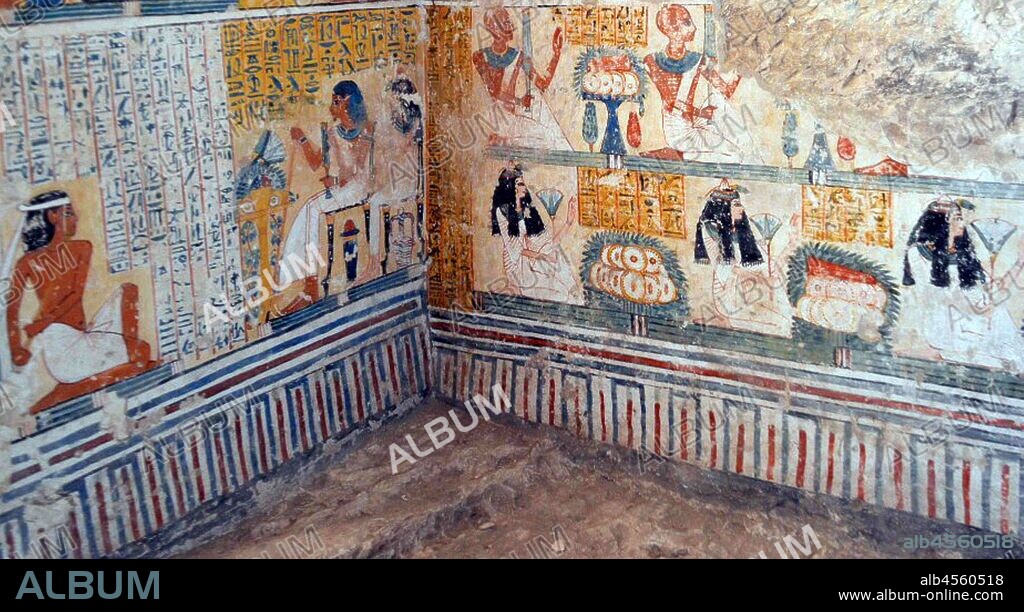alb4560518
Discovery of an 18th dynasty tomb, in Draa Abul-Naga.

|
Zu einem anderen Lightbox hinzufügen |
|
Zu einem anderen Lightbox hinzufügen |



Haben Sie bereits ein Konto? Anmelden
Sie haben kein Konto? Registrieren
Dieses Bild kaufen

Titel:
Discovery of an 18th dynasty tomb, in Draa Abul-Naga.
Untertitel:
Siehe automatische Übersetzung
In September 2018, Egypt's Ministry of Antiquities, announced the discovery of an 18th dynasty tomb, in Draa Abul-Naga, a burial site for noblemen on the left bank of the Nile, near the Valley of the Kings. the tomb contains mummies believed to be a goldsmith called Amenemhat, who lived sometime between 1550 B.C. to 1292 B.C. The burial chamber has a niche at one end, which holds a statue of Amenemhat who sits on a chair next to his wife, Amenhotep. The Eighteenth Dynasty dates back to the 13th century BC, a period noted for some of the most well known Pharaohs, including Tutankhamen and Ramses II. The chamber has two burial shafts. In one, archaeologists found sarcophagi and remains dating from the later 21st and 22nd Dynasties. Those included the remains of a woman and her two grown children. She showed signs of bacterial bone disease and cavities. The other shaft contains funerary masks and statues depicting the goldsmith's family. The tomb hoses deteriorated mummies with their skulls exposed. It is the first known time Egyptian archaeologists have opened a previously sealed sarcophagus in front of the international media.
Bildnachweis:
Album / Universal Images Group / Universal History Archive
Freigaben (Releases):
Model: Nein - Eigentum: Nein
Rechtefragen?
Rechtefragen?
Bildgröße:
5100 x 2784 px | 40.6 MB
Druckgröße:
43.2 x 23.6 cm | 17.0 x 9.3 in (300 dpi)
Schlüsselwörter:
18. DYNASTIE • AEGYPTEN • AEGYPTISCH • ALTES AEGYPTEN • ALTES ÄGYPTEN • AMENEMHAT • ARCHAEOLOGIE • ARCHÄOLOGIE • ARCHÄOLOLGIE • EGYPTISCH • ENTDECKUNG • FLUSS NIL • GOLDSCHMIED • GRAB • GRABKAMMER • GRABMAL • GRABNISCHE • GRABSTAETTE • GRAEBER • GRUFT • MAUSOLEUM • NIL, FLUSS • SCHREIN • TOD • TODESFALL • TUMBA • TÜRBE • ÄGYPTEN
 Pinterest
Pinterest Twitter
Twitter Facebook
Facebook Link kopieren
Link kopieren Email
Email
